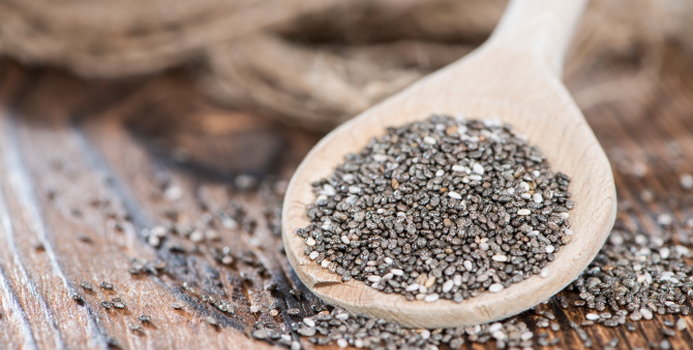Mila seeds, better known in the United States as Chia plant seeds, have so much more to offer than simply growing into a decorative plant. As a food, mila provides high amounts of omega-3 fatty acids, protein, calcium, fiber and antioxidants--all essential to our diets for optimum health.
What Is Mila?
Mila, or Salvia hispanica, is a species of flowering plants native to Mexico and Central America. For centuries, it was so prized by the Aztec civilization for its ability to improve stamina and reduce pain that it was often given as an offering to the Aztec rulers. From early times to now, people have cultivated the plant as a nutrient-rich food source.
Nutritional Value
Every healthy body requires a host of vitamins and nutrients to recharge and keep all the parts running correctly. We all know this, we just want to believe that the pizza we're enjoying counts as a couple servings of vegetables. But, sprinkling some mila seeds over the top of the pizza might just get you there.
Omega-3 Fatty Acids
While much of your diet consists of being tempted by and trying to avoid fat, this is one fat the health of your body requires. While there is no exact FDA recommendation for the daily requirement, most experts agree that a healthy adult or child should consume around 160 mg per day.
Omega-3s are essential nutrients and have been shown to help prevent and treat a number of conditions. Studies show a link between high omega-3 intake and lower instances of certain cancers, cardiovascular problems, asthma, alzheimer's, high-blood pressure and osteoporosis.
One ounce of mila seed contains 4,915 mg of omega-3 fatty acids.
Protein
The Center for Disease Control recommends that adult women and men include 46 to 56 grams of protein respectively in their diets daily. There are 4.4 grams of protein in one serving of mila seed.
Calcium
Calcium is essential to healthy bones and teeth, where 99 percent of your body's calcium is stored. The National Osteoporosis Foundation recommends that adults under 50 get about 1,000 mg of calcium, and those older than 50 increase that intake to 1,200 mg per day.
While dairy products have long been considered the preferred calcium-rich food, studies have shown that animal proteins may block the body's absorption of the essential nutrient. This problem is not an issue for the calcium in mila.
Calcium needs vitamin D to be absorbed properly. Fortunately, you don't have to get the vitamin D at the same time as the calcium. Spending 10 minutes a day in the sun or taking a supplement should cover you.
One ounce of mila contains about 177 mg of calcium.
Fiber
Fiber, although not absorbed by the body, is necessary for good digestion. It is also a smart addition to any weight-loss plan because it helps to fill up the stomach and keep you from getting more calories from less-healthy foods.
Just one ounce of mila provides half the recommended dose of daily fiber. At 10.6 grams, two ounces throughout the day will cover you.
Mila for Health
Although many of mila's essential nutrients are available in supplement form, experts agree that it is better to get your nutrients from food rather than taking a supplement. Health is about how all of the elements of good food work together to keep the body functioning as it should. Mila is a superfood in the sense that it provides such an easy way to incorporate so much clean energy for your body.



